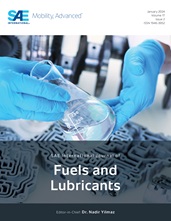A Review and Perspective on Particulate Matter Indices Linking Fuel Composition to Particulate Emissions from Gasoline Engines
- Features
- Content
- Particulate matter (PM) indices—those linking PM emissions from gasoline engines to the composition and properties of the fuel—have been a topic of significant study over the last decade. It has long been known that fuel composition has a significant impact on particulate emissions from gasoline engines. Since gasoline direct injection (GDI) engines have become the market-leading technology, this has become more significant because the evaporative behavior of fuel increases in importance. Several PM indices have been developed to provide metrics describing this behavior and correlating PM emissions. In this article, 16 different PM indices are identified and collected—to the authors’ knowledge, all of the indices are available at the time of writing. The indices are reviewed and discussed in the context of the information required to calculate them, as well as their utility. The authors believe that there is a need for indices that provide both a detailed and robust correlation, as well as those that are less sophisticated yet sufficient for specific use cases. Future research is suggested to guide the technical community toward improvements in the indices’ methods and equations for both high and low fidelity and high and low time investment.
- Pages
- 31
- Citation
- Leach, F., Chapman, E., Jetter, J., Rubino, L. et al., "A Review and Perspective on Particulate Matter Indices Linking Fuel Composition to Particulate Emissions from Gasoline Engines," SAE Int. J. Fuels Lubr. 15(1):3-28, 2022, https://doi.org/10.4271/04-15-01-0001.
